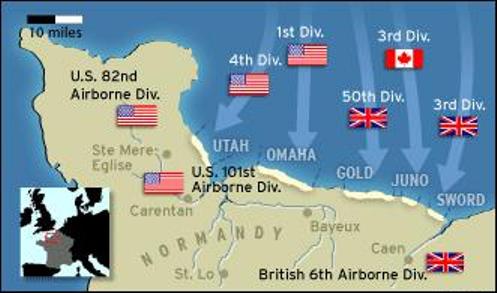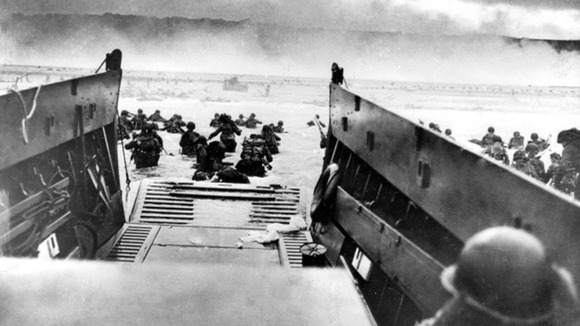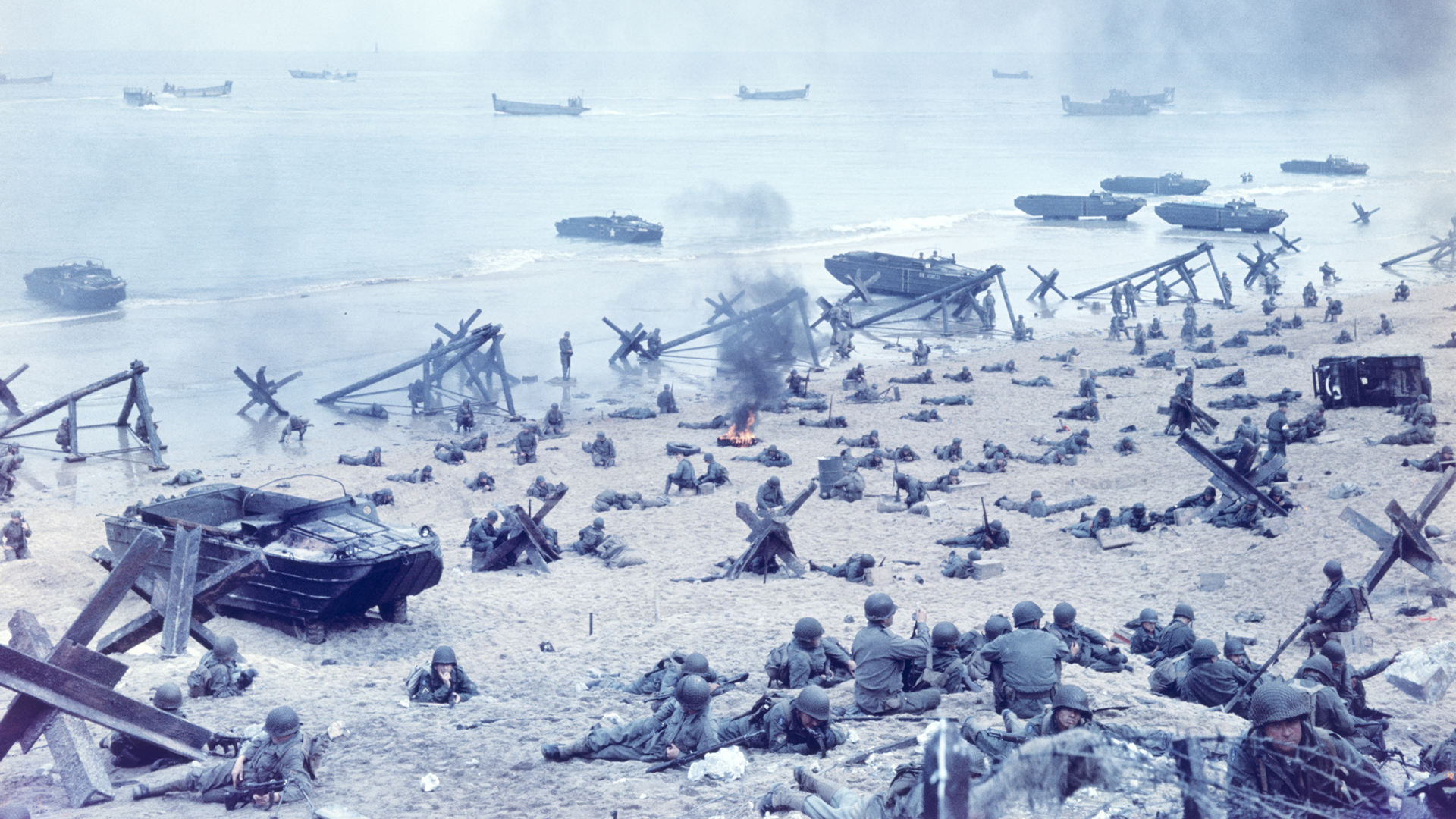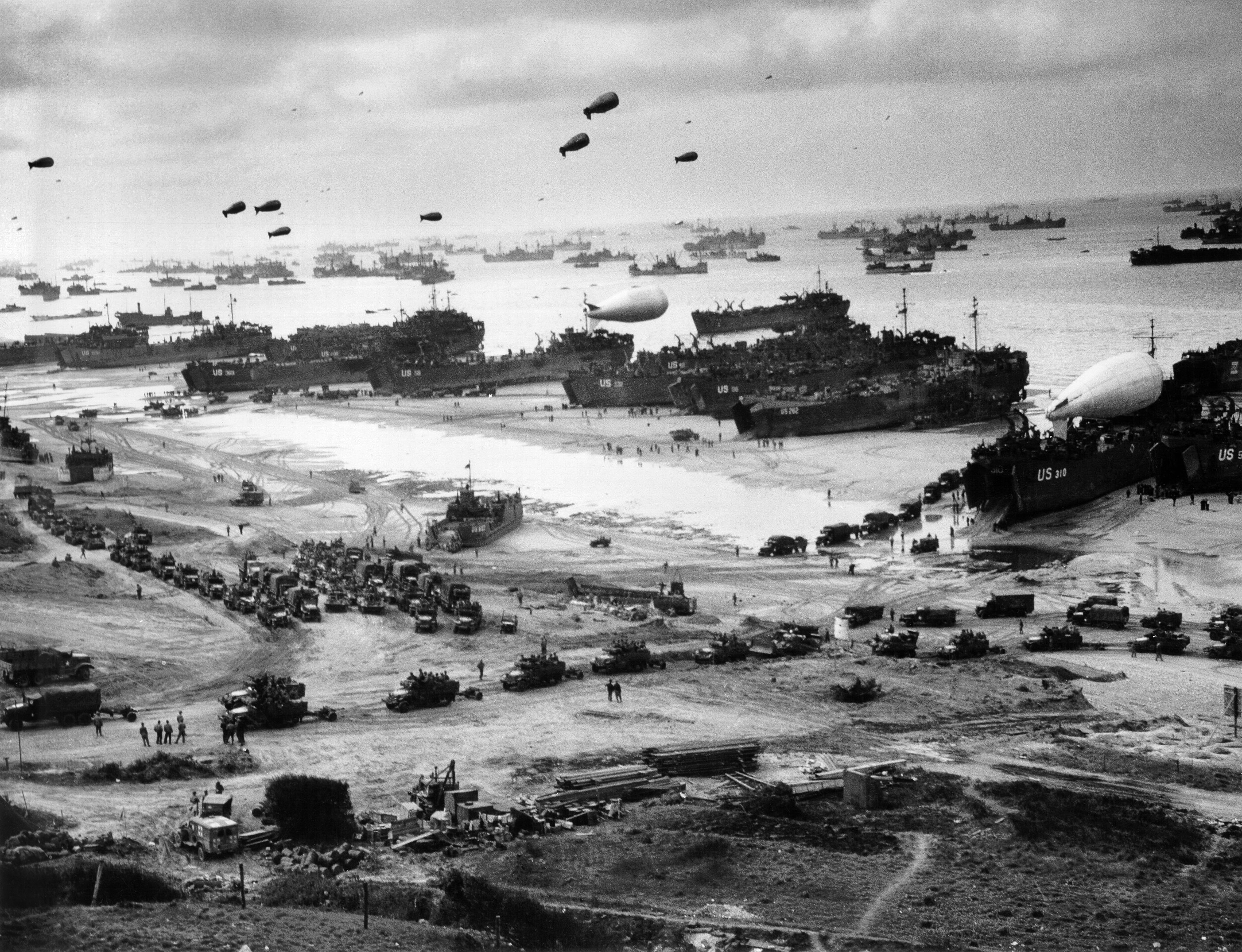
At midnight, the first airborne forces began landing by glider and parachute, behind enemy lines along the Normandy coast. Paratroopers begin to cut phone lines. The ships assembled in the English channel in foggy weather and began the 20 mile journey to the French coast. Approximately 159,000 men, aboard almost 7000 vessels, anchored about 10 miles off the coast shortly after midnight. The aerial bombardment of the coast began at 3 a.m.
By 5 a.m. the paratroopers behind the lines had secured the coastal town of Sainte-Mere-l’Eglise The naval artillery began pounding German pill boxes shortly after 5 a.m. and then the landing craft began moving towards the beaches about 30 minutes later. The first American troops landed on Omaha Beach at 6:30 a.m. By 9 p.m., the British and American troops had established a beach head and worked feverishly to bring supplies, troops and equipment to the beach to take on the German counter-attack. Approximately 4,000 allied troops (British, American, Canadian) were killed in the landing, and about 6,000 were wounded.
According the “92nd Chemical Mortars” Battalion history, by Lt. Col. Ronald L. Martin, Cml. C, (my grandfather’s unit), the Battalion left Plymouth England on June 18 and was then kept out at sea until June 27 because of a severe storm that swept across Normandy. They ultimately landed on Omaha and Utah beaches. On July 1, the battalion was attached to the 30th Infantry Division to support its crossing of the Vire River. (Consistent with these dates, John Shaw’s letter of June 17 to my grandmother was not postmarked until July 4th).


